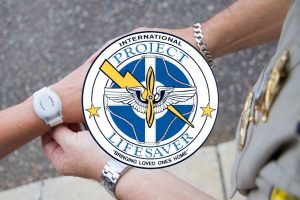 Project Lifesaver has been addressing the elopement issue in the special needs community for more than 20 years. Before you jump into some technology pushed by fear, do your research. Learn its good and bad points. Ask questions and understand the limitations of the technology!
Project Lifesaver has been addressing the elopement issue in the special needs community for more than 20 years. Before you jump into some technology pushed by fear, do your research. Learn its good and bad points. Ask questions and understand the limitations of the technology!
Technology is an important part of the solution. However, it is only part of the solution. The solution to this growing health and safety issue includes the most effective and reliable technology for this specific application along with a comprehensive, certified training program for law enforcement and other first responders. The training program includes special needs search and rescue, the use of locating technology as an aide, and an understanding of the conditions, patterns, and behaviors of the populations they will be recovering and how to interact with them in a positive manner.
By having a national comprehensive compatible program, when families move or travel city to city or state to state, their equipment and the search notification/procedures will remain the same. Also, bordering cities, counties, and communities will be in a position to support each other during a search and rescue operation.
Here is a brief review of the most commonly used locating technologies for individuals who are prone to the life threatening behavior of wandering including radio frequency (RF), Global Positioning System (GPS), and Assisted Global Positioning System (A-GPS), locating technologies used to find individuals who have wandered have advantages and disadvantages associated with each system’s technology.
RF technology is typically used by law enforcement and first responder agencies but is also available to individual caregivers. RF locating technology includes an RF transmitter worn by the individual who is prone to wandering and an antenna which receives signals from the transmitter. The major advantage to RF technology is the accuracy of signal and the strength of the signal which is only minimally diminished by physical obstructions, if the individual is in a building, or by weather conditions. Additionally, the signal is detectable by both ground and air assets. The average rescue time for locating a missing individual using this method has been 30 minutes.
The advantage of GPS is that well-designed GPS receivers have been achieving horizontal accuracy of 3 meters or better and vertical accuracy of 5 meters or better 95 percent of the time.
The disadvantages of using GPS are a high demand for battery power and the fact that the receiver needs a clear path to the satellites to accurately process the signals. Environmental shielding, such as from buildings and extremely dense foliage, can impact the accuracy and even interrupt a tracking. Therefore, when using a GPS tracking device, it is often difficult to detect a wanderer who is indoors. If using a standalone GPS system, the time to establish the initial location is longer than when using A-GPS.
A-GPS is a handset-based system. The device utilizes the cellular base stations to receive timing and positioning signals from the satellites. The transmitter sends the necessary data to the mobile receivers designed into the locating devices. Because the cellular network is being used, device performance inside and outside of large buildings is much improved over regular GPS locator systems. The advantages of using A-GPS are that the wandering individual can be located on a map over the Internet and the map can be accessed using a smart phone or a computer. Locator device designs are small and can be worn as a watch or placed in the sole of a shoe A-GPS is accurate within 50 meters when used inside buildings and 15 meters outside.
The disadvantage of using A-GPS is that if the wandering individual is in an area with low cell phone coverage, then the location of that individual may become intermittent, causing the rescue to become more challenging. A monthly fee is charged when the device requires cellular service for sending alert emails and text messages
 Project Lifesaver has been addressing the elopement issue in the special needs community for more than 20 years. Before you jump into some technology pushed by fear, do your research. Learn its good and bad points. Ask questions and understand the limitations of the technology!
Project Lifesaver has been addressing the elopement issue in the special needs community for more than 20 years. Before you jump into some technology pushed by fear, do your research. Learn its good and bad points. Ask questions and understand the limitations of the technology!